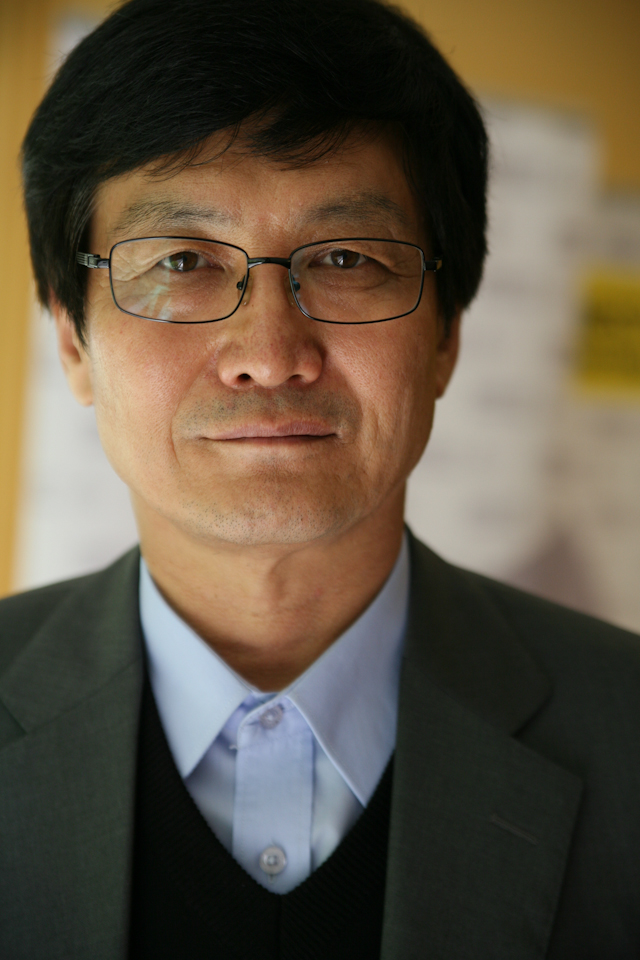Officially, the camps where the political prisoners of North Korea are interned do not exist. According to the regime, there are also no political prisoners in North Korea. Viewed from space, however, the camps have been identified by the human rights organisations Amnesty International and the American Association for the Advancement of Science (AAAS).
From analysis of satellite images, to date six camps have been located. The camps are dispersed across the territory of North Korea, predominantly in the north. Amnesty and the AAAS have collected testimonies from survivors, former prisoners who were pardoned or managed to escape. One of those, Kim Tae-Jin, was in Paris this week, where OWNI met him.
Revolutionary control
Kim Tae-Jin was released from the Yodok camp 20 years ago. He spent four years in the ‘revolutionary control’ section, devoted to prisoners serving sentences of less than 10 years. In the ‘total control’ sections, prisoners leave in a wooden box, unless they manage to escape. A life sentence means a life sentence. Today Kim Tae-Jin is an activist with the NGO Free the NK Gulag, working to get the North Korean regime to recognise the existence of these camps, and to close them.
Researchers at the AAAS were inspired by a previous study, carried out by the US Committee for Human Rights in North Korea (HRNK), explains Susan Wolfinbarger, the head of the program. In 2003, the organisation identified seven camps in North Korea from high-resolution satellite images produced by the QuickBird satellite of the Digital Globe company and Space Imaging’s IKONOS satellite.
The images were then presented to the survivors, and a map of the secret camps began to emerge. The method is an example of “Participatory GIS“. The AAAS has made use of the same method. Susan Wolfinbarger:
Amnesty asked us to analyse the maps, and the AAAS had obtained and observed the images, some of which had never before been seen. Surprisingly, we had some new images of these camps.
They were ordered from three imaging companies, two American (DigitalGlobe and GeoEye) and one Israeli (ImageSat). The satellites used have resolutions ranging from 0.50 m for DigitalGlobe’s World-View 2 satellite to 0.82 m for GeoEye’s IKONOS satellite.
Slavery
From space, the camps appear to extend over many dozens of square kilometres. According to Free the NK Gulag, the camp at Yoduk extends to 20 km in width and 35 in length, divided between the revolutionary control and total control sections. On the ground, Kim Tae-Jin experienced the forced labour and abuse. Amnesty have denounced conditions there that are “akin to slavery”. Kim Tae-Jin remembers.
We had to do tasks against our will, following orders from the guards. Even when our own physical state wasn’t up to it. Children or the elderly were also forced to work. Age was no factor on the harshness of the tasks. There were lots of families there by virtue of the principle of guilt by association, many of them innocent.
Human rights defenders have focused their criticism on the offence of ‘guilt by association’. By virtue of this principle, any family member of someone arrested may also be prosecuted. “In the camp, families lived together in their own separate buildings,” says Kim Tae-Jin. “Today, that’s no longer the case.” Kim was kept with individuals, in large dormitories.
The days schedule is dictated by the work. Before sunrise, the prisoners are collected and counted. Those with agricultural tasks are sent into the fields.
After a few hours, we were given a breakfast: ground corn, sometimes rice, sometimes a soup with cabbage. The quantities were very low. To eat meat, you had to catch rats, frogs or snakes. Those were moments of joy, but to do that you had to avoid those keeping watch.
Kim Tae-Jin describes an organised system of guards, dividing the camp into several sub-sections and the prisoners into teams. Guilt by association is also applied inside the camp. When a team member is caught breaking the rules, the whole team is punished. Torture was common there.
Shin Dong-Hyuk escaped from a camp in Gaechon in 2005. There he had been repeatedly tortured – beaten, burned, his fingers cut. Other survivors have spoken of public executions, including at Yodok. Amnesty International estimates that 200,000 political prisoners are imprisoned today in the camps of North Korea.
Image Credits: Satellite Images © 2011, Digital Globe Inc. Portrait of Kim Tae-Jin by Pierre Alonso CC BY-ND






















